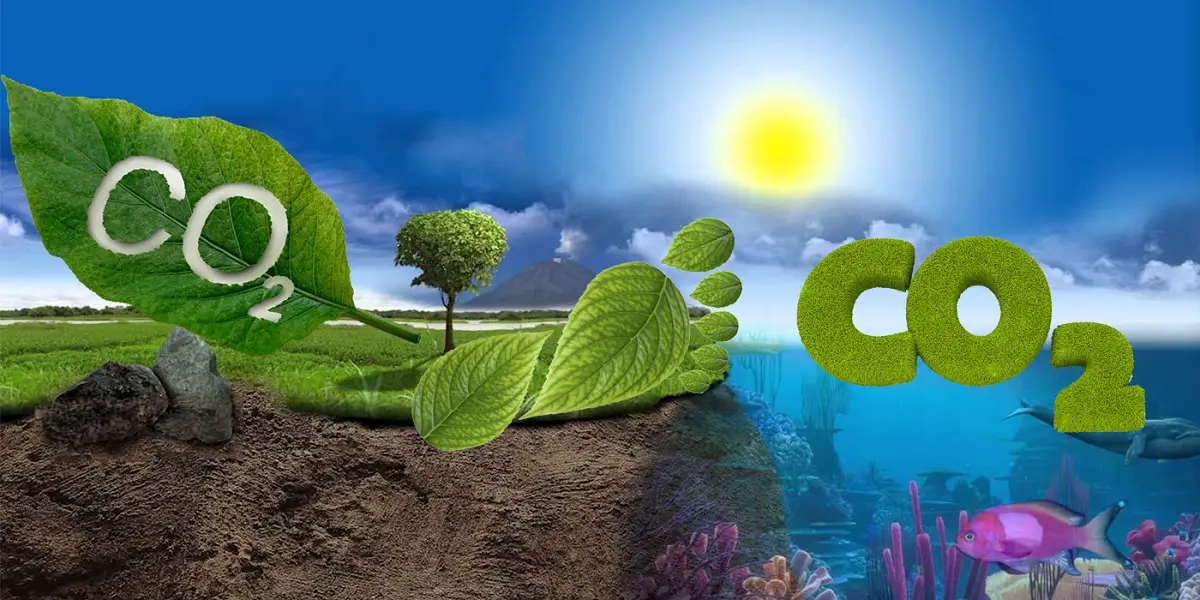

One of the most important biogeochemical processes for life on the planet and is the carbon cycle. It is about the circuit that makes the carbon, exchange of matter and gases between the different spheres of the earth. That is, it is the exchange of carbon between the biosphere, geosphere, hydrosphere, and atmosphere. The carbon style was discovered by European scientists Joseph Priestley and Antoine Lavoisier. Together with the water and nitrogen cycles, they are the most important cycles that allow life on our planet. To this is added the importance of having an atmosphere that makes the planet habitable.
Therefore, we are going to dedicate this article to tell you everything you need to know about the carbon cycle and its importance.
Carbon as an element for life


Carbon is a key element for the existence of life. Most of the organic compounds that are known are involved in numerous substances of organic and inorganic origin. One of the continuous transmissions of the carbon cycle is one in which this component allows its reuse and recycling. Namely, it is capable of sustaining the levels of said element in a constant global balance.
There are numerous forms of carbon in many areas. We can find it in underground carbon mineral reserves and dissolved organic carbon in seawater. It is also found as carbon dioxide in the atmosphere as a result of volcanic emissions or the respiration of living beings. This is how in many processes in which living beings decompose into the resulting organic matter, it has mostly carbon as its concentration. In decomposition zones like they are swamps and other land is in large amounts of carbon.
For the purposes of the carbon cycle, some of these deposits are considered as exchange routes for this element. The existence of these areas is essential as it promotes the proliferation of life that depends on carbon to develop. Broadly speaking, we can say that the world’s great carbon reserves are atmospheric carbon, the carbon content in the bodies of living beings in the biosphere, the carbon that exists dissolved in seawater and what is deposited in the bottom. of the oceans. They can also be found in other places such as mineral deposits in the earth’s crust and in oil and other hydrocarbon extraction areas.
Carbon cycle exchange path


The exchange notes for which the carbon cycle acts are the following:
- Decomposing fermentation processes. They are large deposits that consist of organic matter and are rich in carbon. The organisms that live in it are the ones in charge of decomposing and transforming themselves into this matter. Energy is obtained by changing the release of gases into the atmosphere such as methane and carbon dioxide.
- Respiration and photosynthesis. Together with biotic and metabolic processes, these processes release and capture carbon dioxide from the atmosphere respectively. This atmospheric dioxide is emitted as a by-product and respectively capturing the God carbon the atmosphere. They are also an input in its biochemical pathways. Carbon from carbon dioxide is fixed by plants as part of photosynthesis and is released along with water vapor when animals breathe.
- Gas exchange with the ocean. The oceans evaporate due to the continuous action of solar radiation. This is how the water cycle is established. In this process, the water vapor that is produced is released into the atmosphere and promotes gas exchange between the atmosphere and the ocean. In this way, the carbon is allowed to dissolve in water where accounted for as photosynthetic plankton.
- Sedimentation process. Sedimentation occurs both on land and in the sea. Here, the excess carbon in the decomposing organic matter that is not captured by the rest of the forms, will pile up to sediment the bottom of the oceans in good various layers of the earth’s crust. The rest of the carbon is processed by decomposing life forms. Here, fossils, hydrocarbon deposits or reactive sediments are formed. These are one of the reasons why oil is considered a non-renewable type of energy. And it is that the sedimentation process occurs on a geological time scale.
- Natural or man-made combustion. Human industrial processes and forest fires are naturally taken into account in the carbon cycle. These processes are responsible for the annual increase in carbon in the atmosphere. We know that carbon dioxide in the atmosphere is only part of 1% of the entire composition of the earth’s atmosphere. However, it is the exact ratio for the greenhouse effect to work well. With the increase in carbon dioxide emissions by humans, the greenhouse effect is increasing. This is mainly due to the burning of fossil fuels and the release of organic gases as a product of human industry. Carbon emissions can also be produced by volcanic eruptions.
Carbon cycle balance


All the processes mentioned above occur at the same time and constitute a delicate balance cycle. It must be borne in mind that when occurring at the same time, carbon must be present in all environments. It is part of substances of a very different nature. Interrupting the carbon cycle would mean the impoverishment of many vital areas for the human being and the rest of life.
It is known from different studies that the destruction or interruption of the carbon cycle balance could lead to the end of life as we know it. As you can see, the carbon cycle is very important for the development of life on the planet. I hope that with this information you can learn more about the carbon cycle and its importance.

